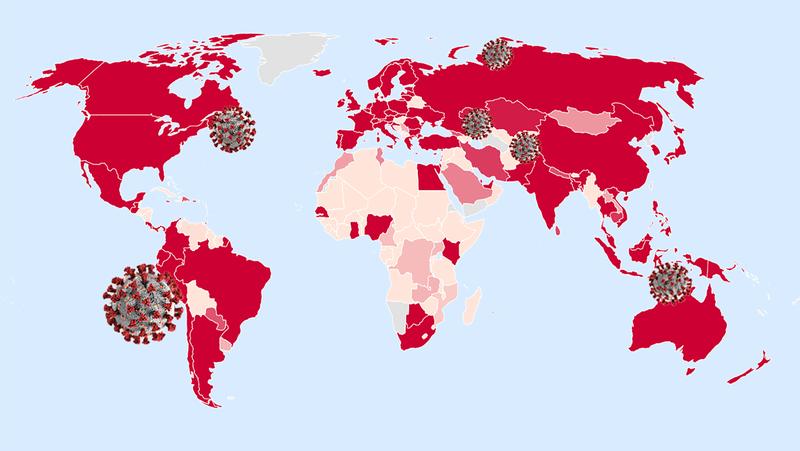Data-driven detection of concerning SARS-CoV-2 variants months in Advance
The online tool CoVerage can detect and characterize SARS-CoV-2 Variants of Concern (VOCs) up to three months before their formal designation of the WHO.
Since the start of the SARS-CoV-2 pandemic, several variants of the virus have developed into Variants of Concern (VOCs), as classified by the World Health Organization (WHO). VOCs are virus variants that are predicted or known to cause large waves of infections due to their altered phenotypic characteristics and with risk of altering disease severity, reducing vaccine effectiveness or otherwise leading to increased burden of health care systems. The CoVerage web platform for genomic surveillance of the SARS-CoV-2 virus enables a rapid, computational identification and characterization of potential Variants of Interest (pVOIs), with a lead time of almost three months before their WHO designation as a VOC or as related variant categories and predicts their ability to escape existing immunity acquired by prior vaccinations or infections. Researchers led by Alice McHardy have successfully demonstrated this in a comprehensive analysis published in Nature Communications. Early detection of VOCs is particularly important for vaccine development in order to ensure vaccine protection against new virus variants.
"We have developed a new analysis method for CoVerage that should help make antigenic changes in virus variants more visible," explains Alice McHardy. Specifically, a matrix based on observations from the long-term development of certain influenza viruses (influenza A H3N2) is used. This matrix links important changes in the virus's genetic material to its properties. The researchers are looking particularly closely at changes in a specific protein of the virus, known as the spike protein. This protein plays an important role because it enables the virus to attach itself to human cells and because it is a main target for vaccines and therapies.
The CoVerage system obtains the relevant data from the GISAID virus genome database, which is a data sharing initiative promoting the rapid exchange of data on priority pathogens such as influenza, hCoV-19, RSV, hMpxV, SARS-CoV-19, and arboviruses such as chikungunya, dengue, and Zika. By March 2024 GISIAD had more than 16.5 million SARS-CoV-2 sequences available. CoVerage analyzes the SARS-CoV-2 genome data by country of origin for strain dynamics and antigenic changes. A statistical method is used to determine which viral strains have significantly changed their immune escape capacity. This involves comparing the amino acid changes occurring across the spike protein of viral strains from a given month. Strains that clearly stand out—i.e., those that show significantly greater changes than the average—are selected as significantly altered. Conspicuous viral strains that are predicted to spread more rapidly or to be significantly altered in terms of immunity are then displayed on the CoVerage platform in special graphics ("heat maps") so that users can see at a glance when and where major changes in the virus are occurring.
To test the reliability of the new analysis method, the researchers examined genome sequence data from virus strains already known to be VOCs, including the Omicron variant of SARS-CoV-2. The working group found that the new method enabled virus lines to be identified retrospectively as VOCs up to three months prior to the WHO designation. "It was interesting to see that the virus variants that were also officially classified as important by the WHO showed significantly higher values in our analyses than other, less noticed variants," explains McHardy. The numbers rose in a clear order: first for variants that are only being monitored (Variants under Monitoring, or VUMs), then for Variants of Interest (VOIs), and finally, most strongly, for the VOC variants, which are considered particularly worrisome.
"Overall, these results underscore the ability of our method to effectively predict the emergence of health-relevant SARS-CoV-2 variants with a growth advantage—well before they reach their maximum frequency or are formally identified by the WHO as concerning," summarizes the bioinformatician. "This could provide valuable time to initiate in-depth analysis required for vaccine adjustments or take targeted measures to protect vulnerable groups, for example."
Wissenschaftlicher Ansprechpartner:
Prof. Dr. Alice McHardy
Originalpublikation:
Norwood K, Deng ZL, Reimering S, Robertson G, Foroughmand-Araabi MH, Goliaei S, Hölzer M, Klawonn F, McHardy AC. In silico genomic surveillance by CoVerage predicts and characterizes SARS-CoV-2 variants of interest. Nat Commun. 2025 Jul 8;16(1):6281. doi: 10.1038/s41467-025-60231-4. PMID: 40628697; PMCID: PMC12238648.
Weitere Informationen:
https://sarscoverage.org/ Website of CoVerage
https://gisaid.org/ Website of GISAID initiative
Ähnliche Pressemitteilungen im idw


